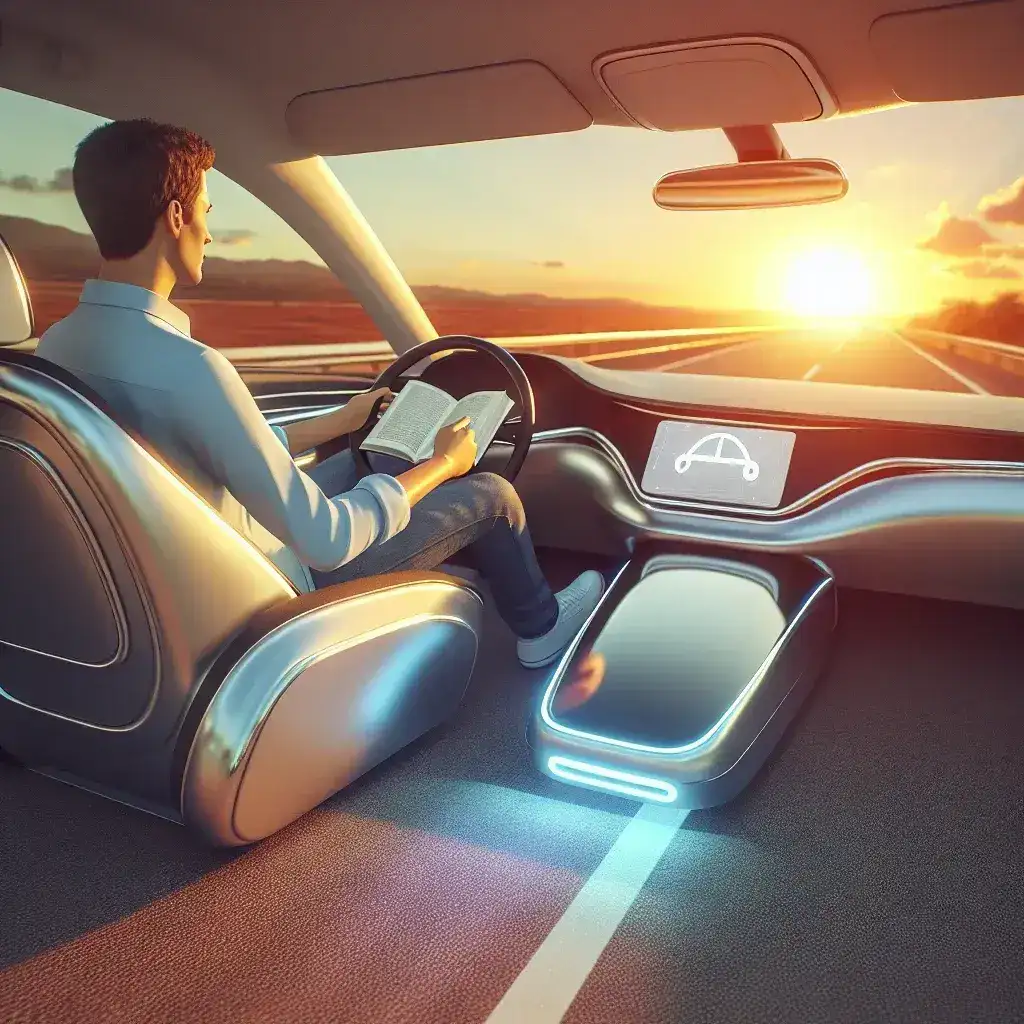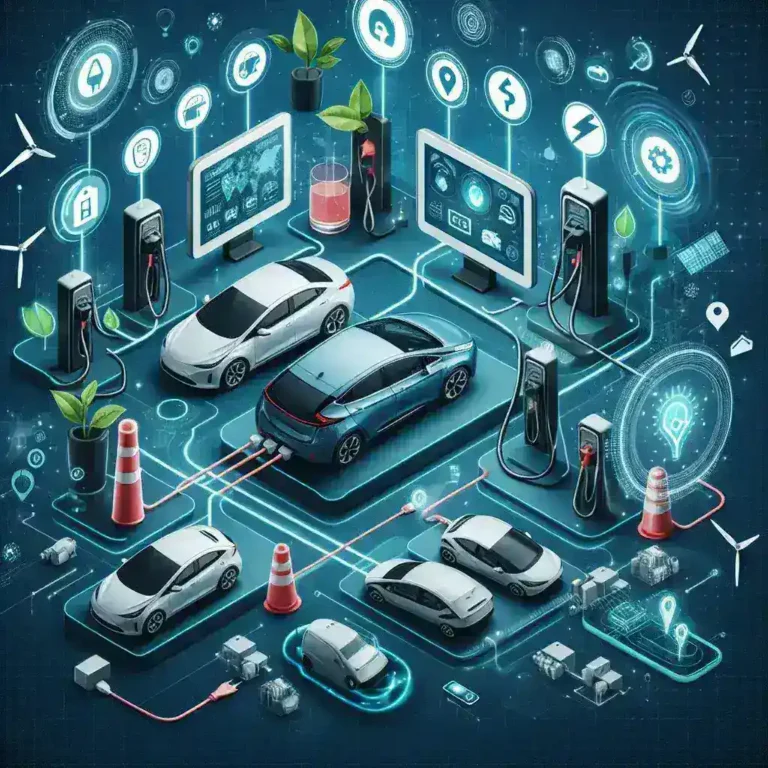
Ford’s Hands-Free Highway Driving: A Revolution on the Road?
Ford’s BlueCruise: Hands-Free Highway Driving Arrives
The automotive world is abuzz. Ford, a name synonymous with American motoring history, has taken a significant leap forward with the debut of its BlueCruise hands-free driving system. This isn’t just another cruise control; it’s a sophisticated technology designed to allow drivers to take their hands off the wheel – but only under specific conditions, a crucial caveat that underscores the current state of autonomous driving capabilities.
BlueCruise is currently available on select Ford models, marking a pivotal moment in the ongoing race toward fully autonomous vehicles. While fully self-driving cars remain a goal for the future, BlueCruise represents a significant step towards that aspiration, offering a taste of what’s to come for the average driver. This system isn’t about replacing the driver entirely; it’s about enhancing the driving experience on pre-mapped highways, offering a welcome respite during long journeys.
How BlueCruise Works: A Peek Under the Hood
BlueCruise leverages a combination of advanced technologies to achieve its hands-free driving capabilities. At the heart of the system is a sophisticated suite of sensors, including cameras, radar, and lidar, constantly monitoring the vehicle’s surroundings. These sensors work in tandem with high-precision GPS mapping to create a detailed picture of the road ahead. The system uses this data to make real-time decisions, maintaining lane position, adjusting speed to match traffic flow, and safely navigating curves.
The driver remains actively involved, however. The system requires the driver to maintain attentiveness, continuously monitoring the road and being prepared to take control if necessary. A driver-facing camera monitors the driver’s alertness, ensuring they remain engaged. If the system detects inattentiveness or encounters a situation it cannot handle (such as construction zones or unexpected obstacles), it will alert the driver and request them to take over.
Safety First: Addressing Concerns and Limitations
The introduction of hands-free driving technology inevitably raises safety concerns. Ford has addressed these concerns by incorporating multiple layers of redundancy and safety features into BlueCruise. The system undergoes rigorous testing and validation, ensuring it meets the highest safety standards. While the technology is impressive, it’s crucial to understand its limitations. BlueCruise is not a fully autonomous system; it operates only on pre-mapped highways, and the driver remains ultimately responsible for the vehicle’s operation.
Furthermore, adverse weather conditions, such as heavy rain or snow, can impact the system’s performance. Similarly, poorly marked or damaged roads can also present challenges. Ford emphasizes the importance of driver awareness and preparedness to take over control at any time. This is not a system to be used while distracted or fatigued.
The Future of Hands-Free Driving: Beyond BlueCruise
Ford’s BlueCruise represents a significant milestone, but it’s only the beginning. The technology is constantly evolving, with future iterations expected to expand its capabilities and operating range. We can anticipate enhancements such as improved sensor technology, expanded mapping coverage, and potentially the addition of hands-free driving capabilities on city streets and in more complex driving environments.
The broader implications for the automotive industry are significant. Hands-free driving technology has the potential to revolutionize the way we travel, offering improved safety, increased convenience, and potentially reduced traffic congestion. However, the path to fully autonomous vehicles remains long and complex, requiring further advancements in technology, infrastructure, and regulatory frameworks. The ethical considerations surrounding autonomous vehicles also need careful consideration.
Comparing BlueCruise to Competitors: A Market Overview
Ford’s BlueCruise competes with similar hands-free driving systems offered by other automakers, such as GM’s Super Cruise and Tesla’s Autopilot. Each system has its strengths and weaknesses, and the best option for a consumer will depend on their individual needs and preferences. Factors to consider include the system’s operating range, safety features, and the availability of the features on specific vehicle models.
While a detailed comparison between all competing systems would require a separate, extensive review, it’s clear that the market for hands-free driving technology is rapidly evolving. Innovation and competition are driving improvements in safety, functionality, and affordability, making these advanced driver-assistance systems increasingly accessible to a wider range of consumers.
Pros and Cons of Hands-Free Highway Driving
- Pros: Reduced driver fatigue on long journeys, improved safety in certain situations (e.g., maintaining consistent speed and following distance), enhanced convenience, potential for increased productivity during commutes.
- Cons: Reliance on pre-mapped highways, limitations in adverse weather conditions, potential for system malfunctions, significant initial cost for equipped vehicles, ongoing debate about safety and ethical considerations around autonomous technology.
The Cultural Impact: A Shifting Driving Landscape
The introduction of hands-free highway driving marks a significant cultural shift in our relationship with automobiles. For generations, driving has been viewed as an activity requiring constant vigilance and control; BlueCruise challenges this traditional perception. The technology subtly alters the social dynamics of driving, potentially impacting how people interact with their cars and the roadways. Long road trips could become more relaxed and less stressful. However, it is essential to address the potential for over-reliance on the system and the need for responsible usage.
This technological leap also raises questions about the future of driving jobs, such as long-haul trucking. While the widespread adoption of autonomous vehicles is still years away, hands-free systems are a stepping stone toward that future, prompting important discussions about workforce transitions and the integration of this technology into society.
It is critical to note that the technology requires responsible and informed use. Drivers must remain attentive and prepared to retake control of the vehicle at any time. The system should be viewed as a driver-assistance tool, not a replacement for human judgment and skill. Educating drivers on the proper usage and limitations of these systems is critical for ensuring safe integration into the driving landscape.
The future of driving is evolving, and Ford’s BlueCruise is a compelling example of the progress being made. While fully autonomous vehicles might still be some years away, the journey towards that future is underway, and it’s a journey filled with innovation, challenges, and profound societal transformations.
Further research into the long-term effects of hands-free driving technology on road safety, traffic patterns, and driver behavior is essential. Continuous monitoring and data analysis will be vital to refining and improving these advanced driver-assistance systems, ensuring they contribute to a safer and more efficient transportation system for everyone.
It is crucial to remember that technological advancements should always prioritize safety. The integration of hands-free driving technology necessitates a holistic approach that considers not only the technology itself but also the infrastructure, regulations, and public education needed to ensure its safe and effective deployment. Only through careful planning and responsible development can we fully harness the potential benefits of these innovations while mitigating the associated risks.
In conclusion, Ford’s BlueCruise marks a significant step forward in the evolution of automotive technology. It presents a glimpse into the future of driving, but it also underscores the importance of responsible development and use of autonomous driving features. While the road to fully autonomous vehicles remains long, Ford has clearly demonstrated its commitment to pushing the boundaries of what’s possible, safely and responsibly.
For more information on Ford’s BlueCruise, please visit the official Ford website. Ford Website For further insights into autonomous driving technology, consider exploring resources from the National Highway Traffic Safety Administration. NHTSA Website



Leave a Comment